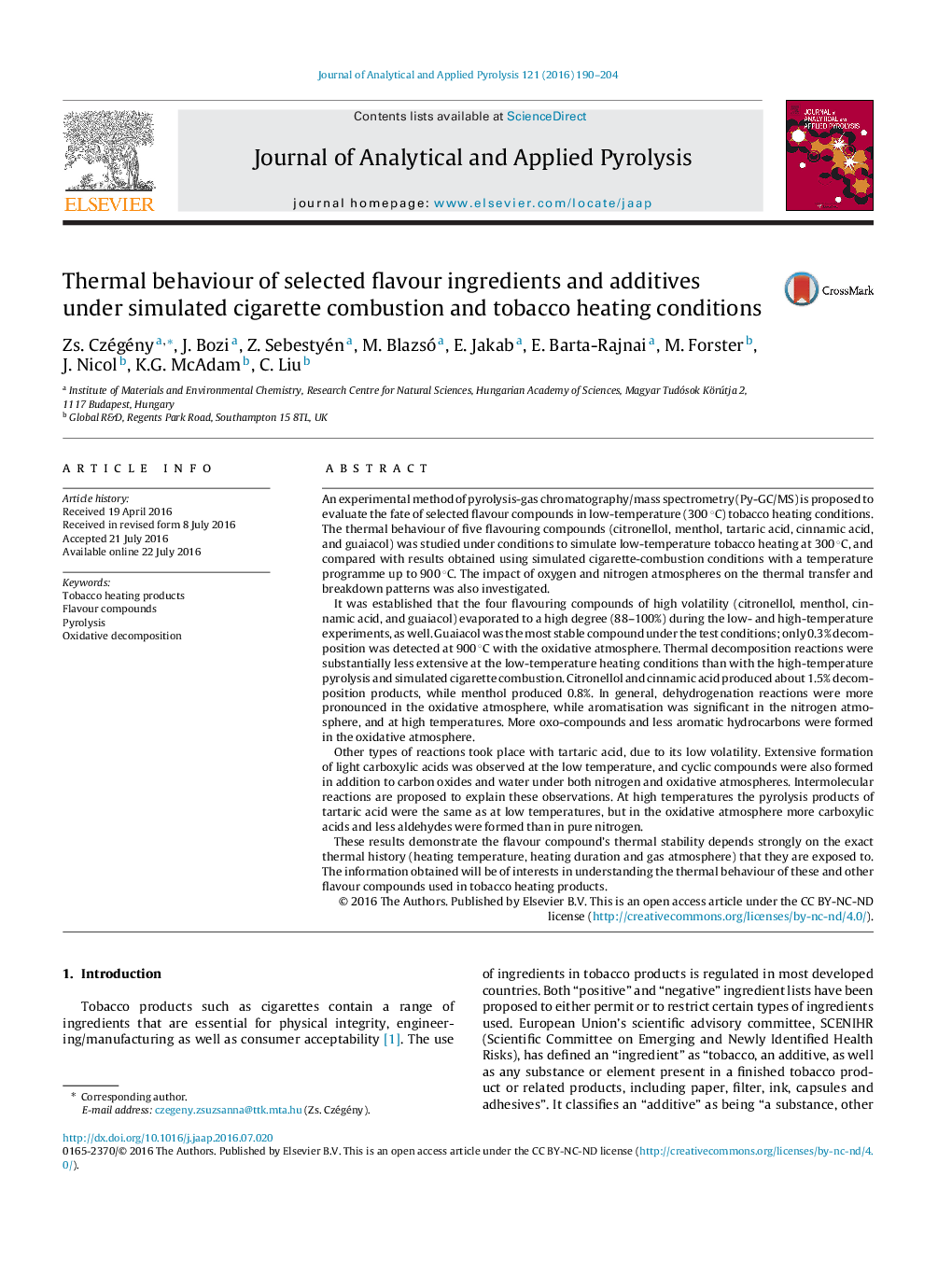| Article ID | Journal | Published Year | Pages | File Type |
|---|---|---|---|---|
| 5134722 | Journal of Analytical and Applied Pyrolysis | 2016 | 15 Pages |
â¢Experimental method using Py-GC/MS is proposed to evaluate the fate of flavours at 300 °C.â¢The applied conditions simulate the low-temperature tobacco heating conditions.â¢Decomposition of five flavours at 300 and 900 °C temperature in N2 and 9% O2/N2 atmosphere was compared.â¢Thermal behaviour of citronellol, menthol, tartaric acid, cinnamic acid and guaiacol was investigated.â¢Decomposition mechanism of the flavours depends strongly on the heating temperature, time and atmosphere.
An experimental method of pyrolysis-gas chromatography/mass spectrometry (Py-GC/MS) is proposed to evaluate the fate of selected flavour compounds in low-temperature (300 °C) tobacco heating conditions. The thermal behaviour of five flavouring compounds (citronellol, menthol, tartaric acid, cinnamic acid, and guaiacol) was studied under conditions to simulate low-temperature tobacco heating at 300 °C, and compared with results obtained using simulated cigarette-combustion conditions with a temperature programme up to 900 °C. The impact of oxygen and nitrogen atmospheres on the thermal transfer and breakdown patterns was also investigated.It was established that the four flavouring compounds of high volatility (citronellol, menthol, cinnamic acid, and guaiacol) evaporated to a high degree (88-100%) during the low- and high-temperature experiments, as well. Guaiacol was the most stable compound under the test conditions; only 0.3% decomposition was detected at 900 °C with the oxidative atmosphere. Thermal decomposition reactions were substantially less extensive at the low-temperature heating conditions than with the high-temperature pyrolysis and simulated cigarette combustion. Citronellol and cinnamic acid produced about 1.5% decomposition products, while menthol produced 0.8%. In general, dehydrogenation reactions were more pronounced in the oxidative atmosphere, while aromatisation was significant in the nitrogen atmosphere, and at high temperatures. More oxo-compounds and less aromatic hydrocarbons were formed in the oxidative atmosphere.Other types of reactions took place with tartaric acid, due to its low volatility. Extensive formation of light carboxylic acids was observed at the low temperature, and cyclic compounds were also formed in addition to carbon oxides and water under both nitrogen and oxidative atmospheres. Intermolecular reactions are proposed to explain these observations. At high temperatures the pyrolysis products of tartaric acid were the same as at low temperatures, but in the oxidative atmosphere more carboxylic acids and less aldehydes were formed than in pure nitrogen.These results demonstrate the flavour compound's thermal stability depends strongly on the exact thermal history (heating temperature, heating duration and gas atmosphere) that they are exposed to. The information obtained will be of interests in understanding the thermal behaviour of these and other flavour compounds used in tobacco heating products.
